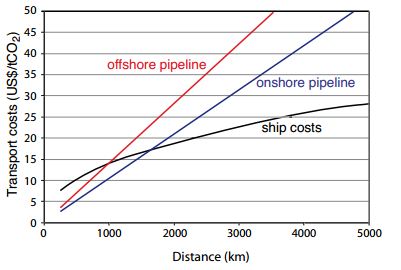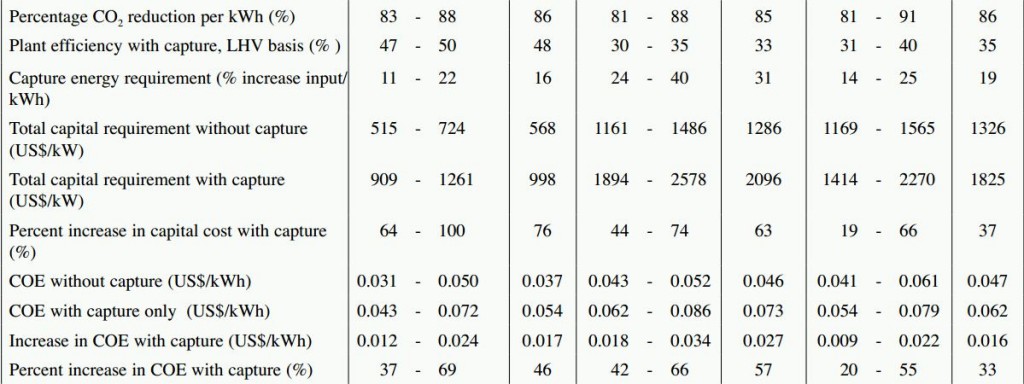CCS is in the advanced stages of the research phase but in the beginning stages of the implementation phase. Large CCS projects are just starting to be implemented all over the world. The upfront cost of CCS is high and the cost of electricity production will go up with a CCS process involved. These costs don’t seem to outweigh the need to reduce CO2 emissions required by policy due to the large number of projects being implemented. A map from MIT of all the current CCS projects can be found here.
Upfront costs are hard to estimate due the high dependence on the size of the operation, although The Global CCS Institute estimated that upfront cost for a IGCC plant would increase by 30%, and costs would increase by 80% to 100% for traditional coal and gas based plants. Obviously this indicates that this technology will be easier and more economical to install into new high tech plants as opposed to traditional plants. As the transition between the old plants to the new plants CCS will be easier to implement.
The IPCC has a table to show their estimates of the CCS costs associated with new types of plants.
As shown in the table, cost of electricity has the potential to rise a substantial amount as well as the capital costs for new plants . It is important to note that these estimates only include capturing and compressing CO2 and don’t account for storage and transportation.
Transportation of the CO2 is very uncertain depending on many factors such as transportation by pipeline, truck or ship, and whether the pipeline is onshore or offshore. Geological as well as geographical factors determine which type of transportation to use. Below is a comparison between onshore and offshore pipelines as well as shipping costs for  different distances.
different distances.
Storage costs are also very uncertain especially for ocean storage. Depending on the type of storage the costs vary widely with Geological storage being the cheapest by far. This is the case without the added revenues that could be achieved from EOR and other uses for the CO2. Ocean storage is the next viable option. Mineral storage is very expensive and would only be used in very special cases. Geological storage is the most technically advanced because the technology and equipment has been widely used by the oil and gas industry. This also reduces the uncertainty of the cost estimates and makes this the most attractive option. Ocean storage would only be used in special cases most like CO2 sources that are located offshore.
Resources:
Metz, Bert Ogunlade Davidson, Heleen de Coninck, Manuela Loos, IPCC Special Report on Carbon Dioxide Capture and Storage. IPCC, . 2005. Print.
Global CCS Institute. “Global Status of CCS 2011.”Global Carbon Capture and Storage Institute. Global Carbon Capture and Storage Institute, 4 Oct. 2011. Web. 15 Apr. 2014.
Written by: Michael Duncan
Edited by: Eric Gallant

